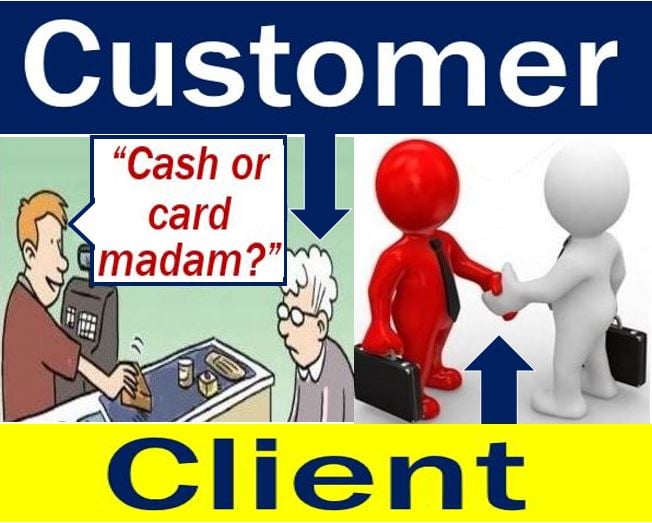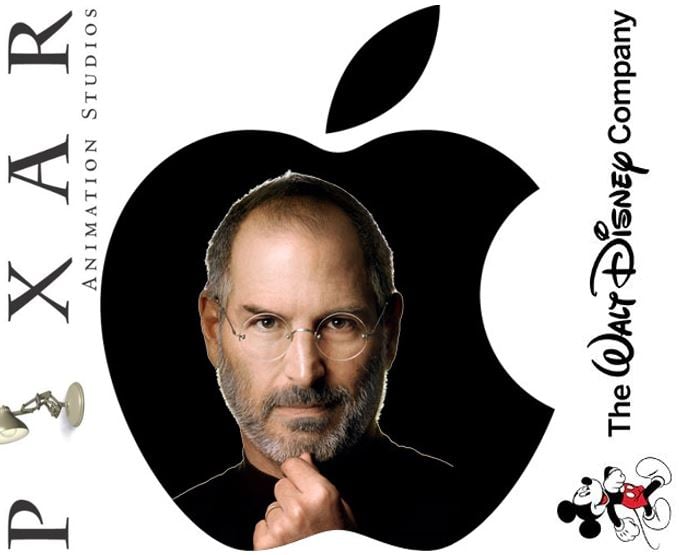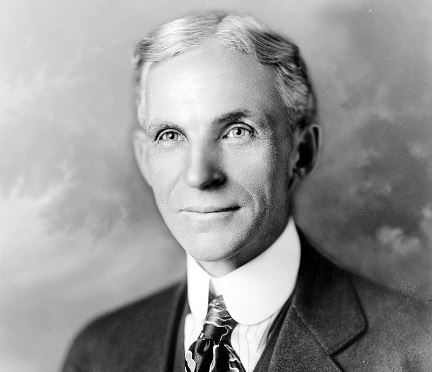A Customer is a person or company that receives, consumes or buys a product or service and can choose between different goods and suppliers. The main goal of all commercial enterprises is to attract customers or clients, and make them purchase what they have on sale. They also try to encourage them to keep coming back. At the core of marketing is having a good understanding of what the customer needs and values.
We often refer to customers who have a relationship with the supplier as clients. Also, people who hire the services of a professional are clients, not customers. For example, a lawyer has clients.
When a customer buys something, the seller immediately focuses on the next one. However, with a client, the aim is to cultivate the relationship.
In many cases, the client-supplier relationship becomes similar to a partnership. This does not tend to happen with customers.
According to American Express, the 7-step approach for attracting new customers is to:
- Identify your ideal client.
- Discover where your customers live.
- Know your business inside and out.
- Position yourself as the answer.
- Try direct response marketing.
- Build partnerships.
- Follow-up.

Customer-centric businesses
Most business employees agree with the adage ‘Customers are always right,’ because happy customers buy things and are more likely to come back. A company that has customers as its main focus is known as a customer-centric business.
In other words, customer-centric businesses do not have the product or sales as the main focus of the business.
Since the turn of the century, a growing number of companies have become entirely customer-centric. This is because of the emergence of the internet and e-commerce.
Online sellers closely track the relationships they have with their customers; often asking for feedback. They gain data on visitors’ online behaviors and purchasing patterns. Online sellers do this because they want to improve their purchasing experience.
Sellers online strive to tailor their offerings closely to the needs and preferences of their customers.
Customer and consumer
Customers are often also consumers. In other words, they are often the ultimate users. The terms ‘customers’ and ‘consumers’ mean the same thing if the person who buys something also consumes or uses it.
Customers, unlike vendors or resellers, are usually (but not always) the end users of any good or service that they have paid for.
Even though the two terms are very similar, there is a basic difference. Customers are human beings, companies, or entities that purchase goods and services.
As soon as customers consume what they purchased, they are also consumers. For us to class anybody as a consumer, there must be some consumption or usage.
Sometimes customers and consumers are not the same people. For example, if I buy baby food, I am the customer, but my baby daughter is the consumer. She consumes the food, not me.
We also use the term ‘ultimate consumer’ to emphasize where the end of the road is for the product or service.
Customer categories
There are many different types of customers:
B2C
B2C stands for Business-to-Customer. For example, when I buy a coffee at a stall at the train station, it is a B2C event.
B2B
The term stands for Business-to-Business. For example, when the coffee stand owner buys coffee from a supplier; both of them are businesses.
C2B
C2B stands for Customer-to-Business. For example, when I sell my gold ring to a pawnbroker or jewelry store.
C2C
C2C stands for Customer-to-Customer. For example, when I want to sell my car privately to another person. eBay is a huge C2C and B2C marketplace.

Brief history of the word
According to the Online Etymology Dictionary, the term first appeared in the English language in the fourteenth century. At the time, it meant ‘a customs official.’ In the early fifteenth century, it also meant ‘a buyer.’
The term came from Anglo-French custumer, which came from Medieval Latin custumarius.
It was not until the 1540s that people began using the term with its current meaning. Its current meaning is ‘a person with whom one has dealings.’ Shakespeare used the word when referring to a prostitute.

Customer idioms
Slippery Customer
The idiom refers to people who are deceitful as well as clever. We also use it for individuals who are elusive. In other words, people who are difficult to pin down.
A Tough Customer
This a person who is not easy to deal with. It can also mean somebody who is difficult to satisfy. For example: “Pauline is a tough customer, I would stay away from her if I were you.”
An Ugly Customer
Ugly customers are people who can become aggressive easily, or even vicious. As in: “When Barry has been drinking he can be an ugly customer. I’ve seen him suddenly throw things at people just because he did not like the way they looked at him.”
An Awkward Customer
This is somebody who is awkward, difficult to deal with, or hard to please. They may also cause problems. In fact, in many cases, they cause problems deliberately. They do not behave in the way you would expect.
Cool Customer
A cool customer never panics. This person remains calm and composed; even in alarming situations.
Your target customer
Advertisers try to target their messages to people who will be interested in the contents of the advert. In other words, they aim them at those who will likely want or need that product or service.
To try to identify their target market, advertisers study several demographic features, such as people’s gender, age, and income. They may also try to find out what their zip codes and academic qualifications are.
If advertisers are willing to pay for the data, they may also obtain lists of people. In other words, specialized lists, according to people’s buying behaviors, hobbies, marital status, etc.
The more precisely you can define your target customer, the better and more effectively your advertising vehicles will perform. In other words, you will reach more of the right type of people for less expenditure.
If, for example, you are promoting a taxi company in New York suburb, advertising in a national newspaper would be silly.
You would reach your target customers more effectively by advertising in local media, and shop windows. You could also advertise using billboards in the suburb.
Five C’s of Marketing
‘Customer’ is one of the Five C’s of Marketing. The other four are Competition, Collaborators, Company, and Climate.
The Five C’s are the five most important areas of marketing.
